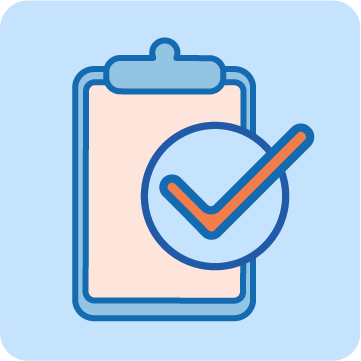 | Advocate and Ask Questions When preparing for a doctor’s office visit, information is helpful for everyone: It’s important to gather it and share it! - Reach out to the staff at the doctor’s office in advance. Once you’ve shared the reason for the appointment, ask for details to help you and your child know what to expect. Our list of questions for health professionals (English | Español) is a great tool to build from as you consider what specific details you want to know.
- Understanding the office’s check-in steps, exam procedures, and typical environmental components (e.g., lighting, smells, and sounds in waiting areas and exam rooms) allows you to plan for navigating these elements before you arrive. Having this information also means you can make direct accommodation requests to reduce barriers to access during the appointment. Consider these ideas for potential accommodations:
- Reduced waiting times or sensory-friendly waiting spaces
- Personal clothing options to avoid potentially rough or itchy medical gowns
- Sound moderation and management like access to headphones or preferred music
- Information in accessible formats (printed, digital, verbal, visual, etc.)
- Share important information about the child with the doctor’s office. In addition to sharing their unique needs and acute medical symptoms for their treatment, consider including information about their interests and strengths so the professionals have a sense of topics that may help build initial rapport.
- Using this personal information card (English | Español), your child can work with you to prepare a tangible reference tool for sharing personal details that they can use as they practice self-advocacy with safe professionals.
- Check out advocacy resources aligned to your medical visit situation. The Autism Society shares materials for health and wellness initiatives and vaccine accessibility including visual schedules, social stories, and communication boards to prep for conversations about vaccines, staying healthy during the winter, and more!
|
 | Plan Ahead Establish some expectations before the appointment using the information you’ve gathered, and explore the various professionals, settings, and transitions common at a doctor’s office appointment. - Mark the appointment on a calendar. Point the date out to the child, and talk about it daily as you mark off the days leading up to the scheduled appointment.
- Introduce various health professionals using this “Who Are Health Professionals?” discussion story (English | Español). As you read together, pause and discuss the type of professionals they may see. If you can view pictures of the child’s doctor on a website, review the picture and the doctor’s name as you describe their job and how they will interact with the child during the appointment.
- Talk about the experience using social stories like our "Going to the Doctor" Social Script (English | Español). You may also choose to watch videos that model going to the doctor’s office for additional exposure.
- Use this “Going to the Doctor” sequence strip (English | Español) to explain the process step-by-step. Introduce the sequence strip at home, and then bring it with you to the appointment to refer to as needed during the transitions.
- Identify potential reinforcements to use during and after the doctor’s visit. Choose preferred items or experiences, and discuss them with the child.
- Prepare a bag of comforting and supportive items to bring to the appointment. Have your child identify a few essential pieces to include. Common items that can help are favorite toys, sunglasses, headphones, and visual supports.
|
 | Practice Prepare students for the doctor’s office by practicing anticipated experiences. - After introducing some various expected situations using stories, videos, and sequence strips, practice by role-playing common or especially difficult experiences together. Include situations involving a variety of people (e.g., receptionist, nurse, doctor, other patients), and emphasize expected transitions like checking in, waiting to be called to a room, and moving to an exam room. Give direct feedback and reinforcement as you role-play.
- Set up a simulated doctor’s office in your home, and discuss some common areas. For example, set up toys or have family members sit in the living room to simulate a waiting area, and practice “waiting” while targeting some expected behaviors around others in shared spaces.
- If possible, consider completing a trial run with the child. Go to the doctor’s office location, and point out some details like the entryway and signs with the office’s and/or doctor’s name. You can even consider calling the office and asking for a tour! If this is not feasible, many medical offices have a website with pictures and videos showing staff, exam rooms, medical tools, etc.
|
 | Reflect and Reinforce After the appointment, it’s also important to take some time to reflect and debrief about the experience. - Follow through on providing any outlined reinforcements. Consider attaching the stressful experience with a positive and preferred one, like enjoying a favorite meal, going to a playground, or spending extra time engaging with interests like video games.
- Provide opportunities for students to share about their doctor’s office visit in ways that are accessible to them: Prompt a conversation through verbal questions, ask them to write a story, or have them draw a picture to communicate their feelings about the experience.
- Media Center subscribers can also consider using some of our visual support resources for our new Routine Essentials unit, Bathroom/Self-Care, to teach other self-care and health-related concepts like brushing teeth and washing hands. Discuss how these routines relate to going to the doctor.
|

